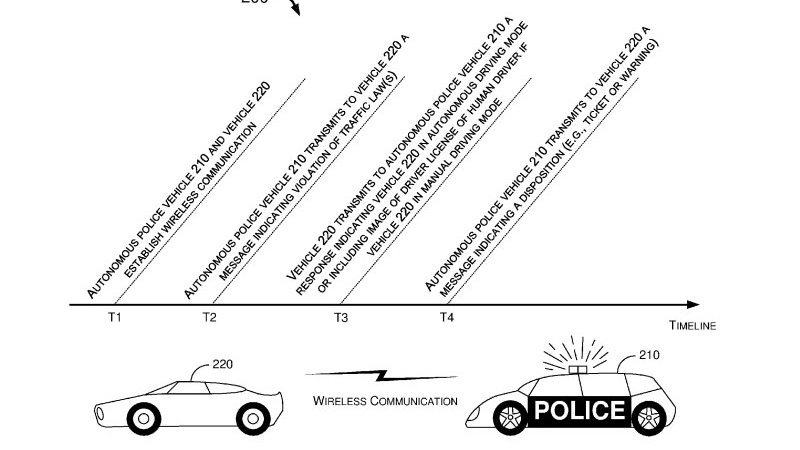Ford files patent application for an autonomous police vehicle

The division that owns, manages and commercializes patents and copyrights for Ford applied for a patent for an autonomous police vehicle (APV) in 2016. Said vehicle is a long way off, but should it ever arrive as described in the patent, it would be able to hide, detect violations from that hidden position, give chase, issue warnings and fines, and much more.
As laid out in the patent, say you were in your own autonomous vehicle and Ford's APV detected your car speeding. The driverless police car could then ping other local enforcement devices like speed cameras or other vehicles to get verification of the violation. Or it could tap into surveillance cameras and monitor the feed to catch an offender. If the APV decided to give chase, it could communicate with your car to find out if you're driving, or if the car's in autonomous mode. If you were driving, your own car could convey a copy of your driver's license to the APV to verify identity, and then an algorithm in the APV would determine whether to issue a warning or a fine.
Just like the average commuter wants an autonomous car so he can focus on important things during a drive, Ford envisions its APV performing "routine police tasks, such as issuing tickets for speeding or failure to stop at a stop sign ... so that police officers can perform tasks that cannot be automated."
The APV could be manned, putting a human body in the seat in case a breathalyzer test or deeper investigation of a suspect is necessary. Or perhaps Ford has a patent for a cybernetic police officer that we simply haven't seen published yet.
Related News
